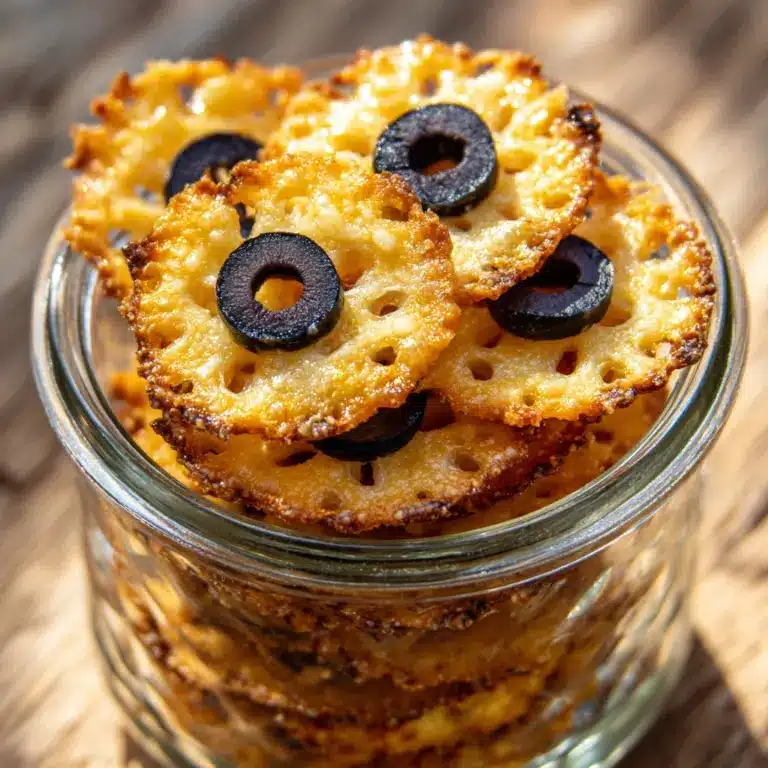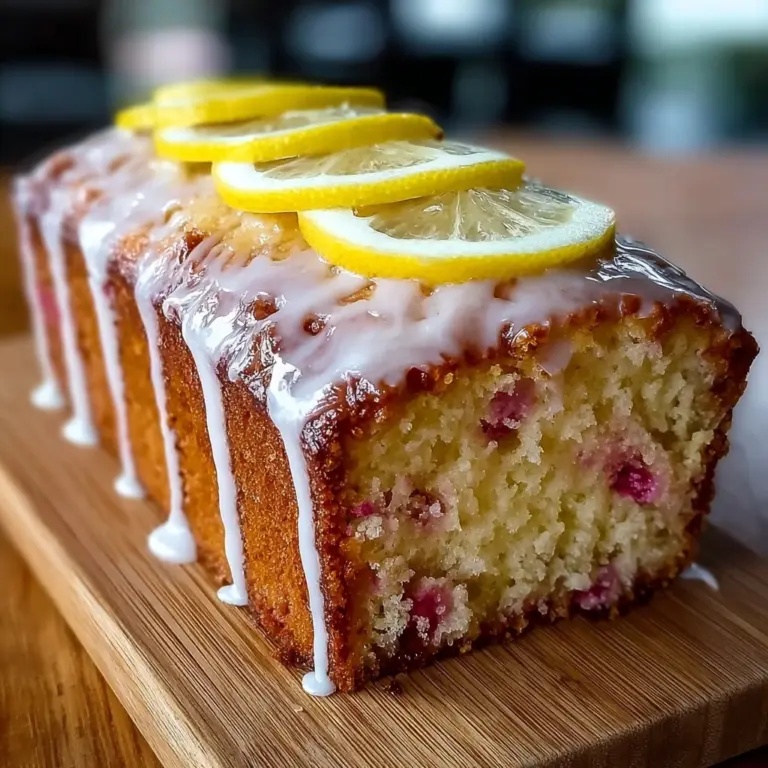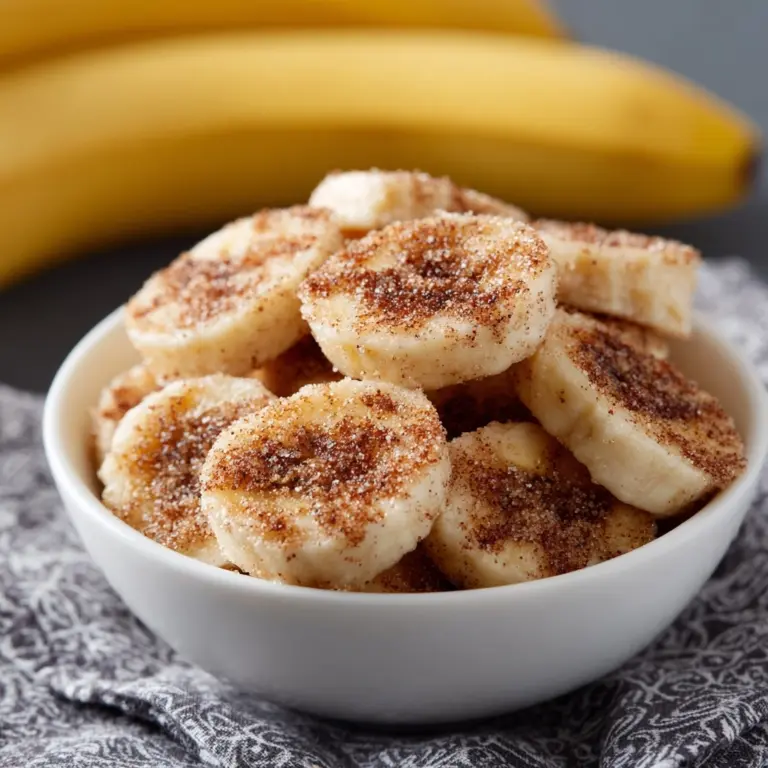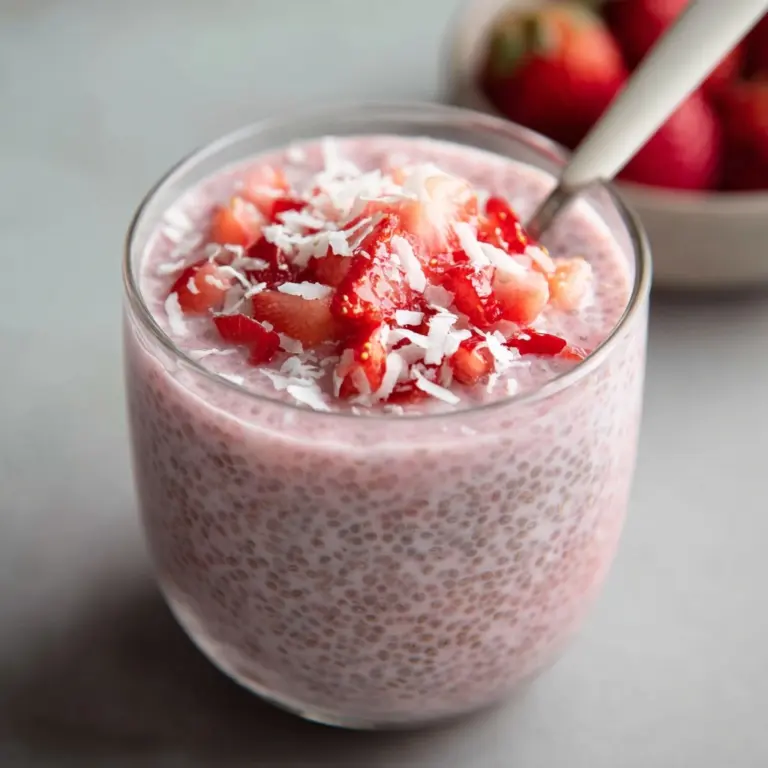Jalebi Recipe (With Yeast) Recipe
If you’ve ever craved those perfectly crisp, golden spirals soaked in luscious syrup from street stalls, you’ll absolutely adore this Jalebi Recipe (With Yeast). Unlike the traditional sourdough or fermented batters, the magic of yeast gives these jalebis a wonderfully airy, slightly tangy fluffiness that’s simply irresistible. The delicate balance of flours, the fragrant saffron, and the subtle hint of cardamom in the sugar syrup combines with the crispy fried batter to create a treat that will soon become your go-to dessert for festivals, special occasions, or just because. Trust me, once you try making jalebis with this straightforward recipe, you’ll never want to buy them from outside again!
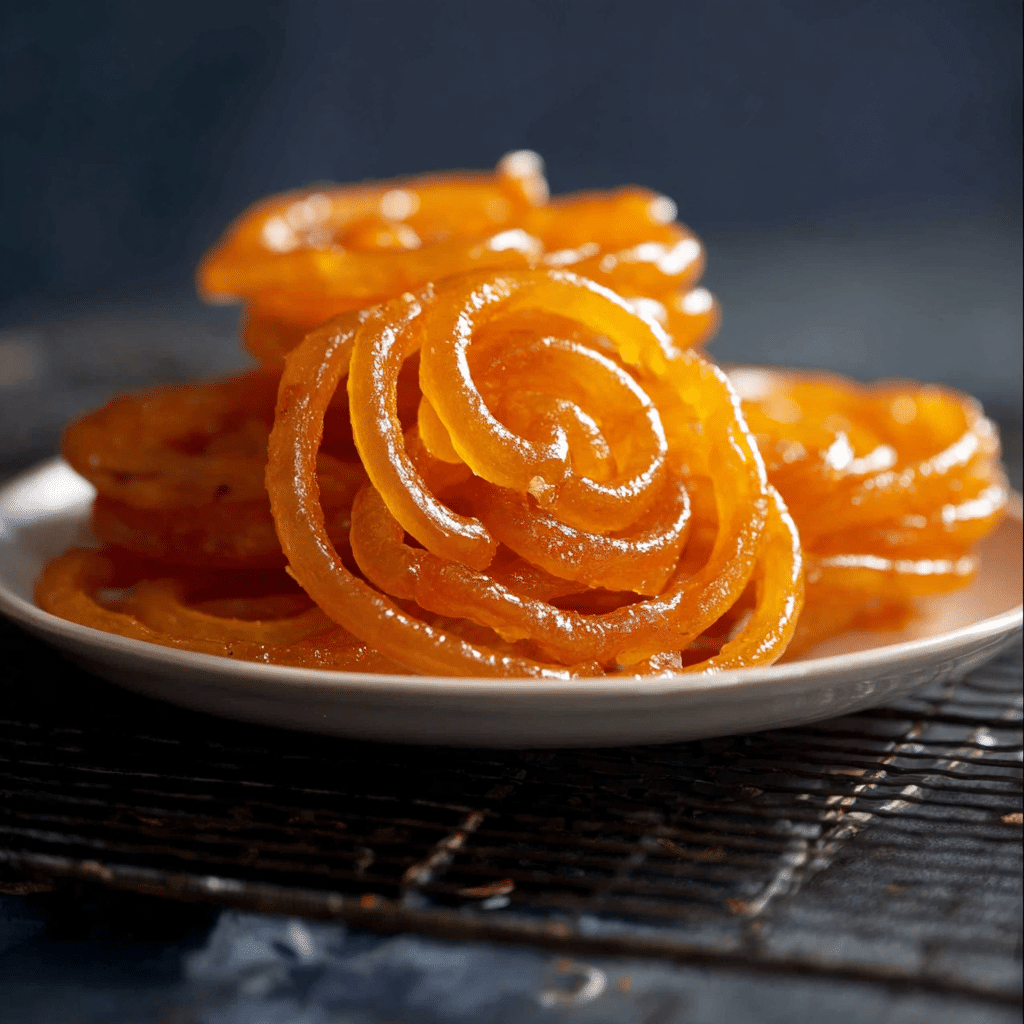
Ingredients You’ll Need
This Jalebi Recipe (With Yeast) relies on simple yet thoughtfully selected ingredients that play a crucial role in the texture and flavor of your final dish. Each adds its unique touch, from the softness given by yogurt to the crispy crunch brought by cornstarch.
- Active dry yeast (1 teaspoon): The secret fermenting agent that makes your batter light and airy.
- Warm water (3 tablespoons + ¼-⅓ cup): Helps activate the yeast and adjusts batter consistency perfectly.
- All-purpose flour (maida) (1 cup): The base flour that provides structure to the jalebi.
- Cornstarch (1.5 tablespoons): Adds crispness and a delicate bite to the fried jalebis.
- Besan (gram flour) (1.5 tablespoons): For a subtle nuttiness and added texture.
- Ghee, melted (1.5 tablespoons): Enhances richness and imparts a lovely aroma into the batter.
- Whole plain yogurt (2 tablespoons, room temperature): Contributes to fermentation and tangy complexity.
- Saffron pinch: A touch of luxury and golden color for your syrup and batter.
- Orange or yellow food color (2-3 drops): Optional but traditional for inviting vibrant jalebi hues.
- Oil for frying: Use any neutral oil, or for a more authentic aroma, add 1-2 tablespoons ghee to the frying oil or fry directly in ghee.
- Granulated sugar (1.5 cups): The base for the glossy, sweet syrup.
- Water (1 cup for syrup): To dissolve the sugar and create syrup perfect for soaking.
- Lemon juice (1 teaspoon): Adds balance and prevents crystallization of sugar syrup.
- Green cardamom pods or powder (1 teaspoon pods or ¼ teaspoon powder): Adds warm, floral spice to your syrup.
- Saffron strands (7-8): Enhances syrup with exotic color and aroma.
How to Make Jalebi Recipe (With Yeast)
Step 1: Bloom the Yeast
Start by activating the yeast which is key to your batter’s airy texture. Mix a scant pinch of sugar, 2-3 tablespoons of warm (not hot) water, and sprinkle in the active dry yeast. Let it sit for 5 to 8 minutes until you see a frothy layer forming on top. If this doesn’t happen, discard and start again—proper yeast activation is crucial for fermentation and the perfect jalebi.
Step 2: Prepare the Batter
While waiting for the yeast to bloom, sift together the all-purpose flour, besan, and cornstarch in a large bowl. Add melted ghee and room temperature yogurt to the dry ingredients and mix gently. Once your yeast froth is ready, pour it into the flour mixture and gradually add lukewarm water, beating gently to get a smooth, lump-free batter. The consistency should resemble thick pancake batter. This is your canvas for those light, crispy jalebis.
Step 3: Ferment the Batter
Cover the batter bowl with cling film and keep it in a warm spot for 2-3 hours. The yeast will work its magic and ferment the batter, making it light and fluffy, vital for that signature jalebi texture. In hotter months, this might take less time, so keep an eye on it. Avoid stirring the batter too much after fermentation; just fold gently once or twice to keep the air inside.
Step 4: Prepare the Sugar Syrup
About 10 minutes before frying, make your syrup. Boil sugar and water in a wide pot until sugar dissolves completely, then simmer with cardamom for 6-7 minutes until syrup thickens slightly—it should feel sticky like honey between your fingers. Add lemon juice to prevent crystallization, then remove from heat. Stir in saffron strands for a golden glow and rich aroma, and keep the syrup warm next to your frying station.
Step 5: Fry the Jalebis
Heat 1-2 inches of oil (or ghee) in a wide pan on medium heat. Test the oil by dropping a bit of batter in; it should float up just without browning too fast. Pour the batter into a squeezable bottle and gently pipe circular spirals into the hot oil, working from inside out to form the classic jalebi shapes. Fry 6-7 at a time, flipping when they float and turning golden. Remove with a slotted spoon, drain excess oil, and immediately immerse in warm sugar syrup for 20-30 seconds before draining again. This quick soak keeps them crisp yet sweet.
How to Serve Jalebi Recipe (With Yeast)
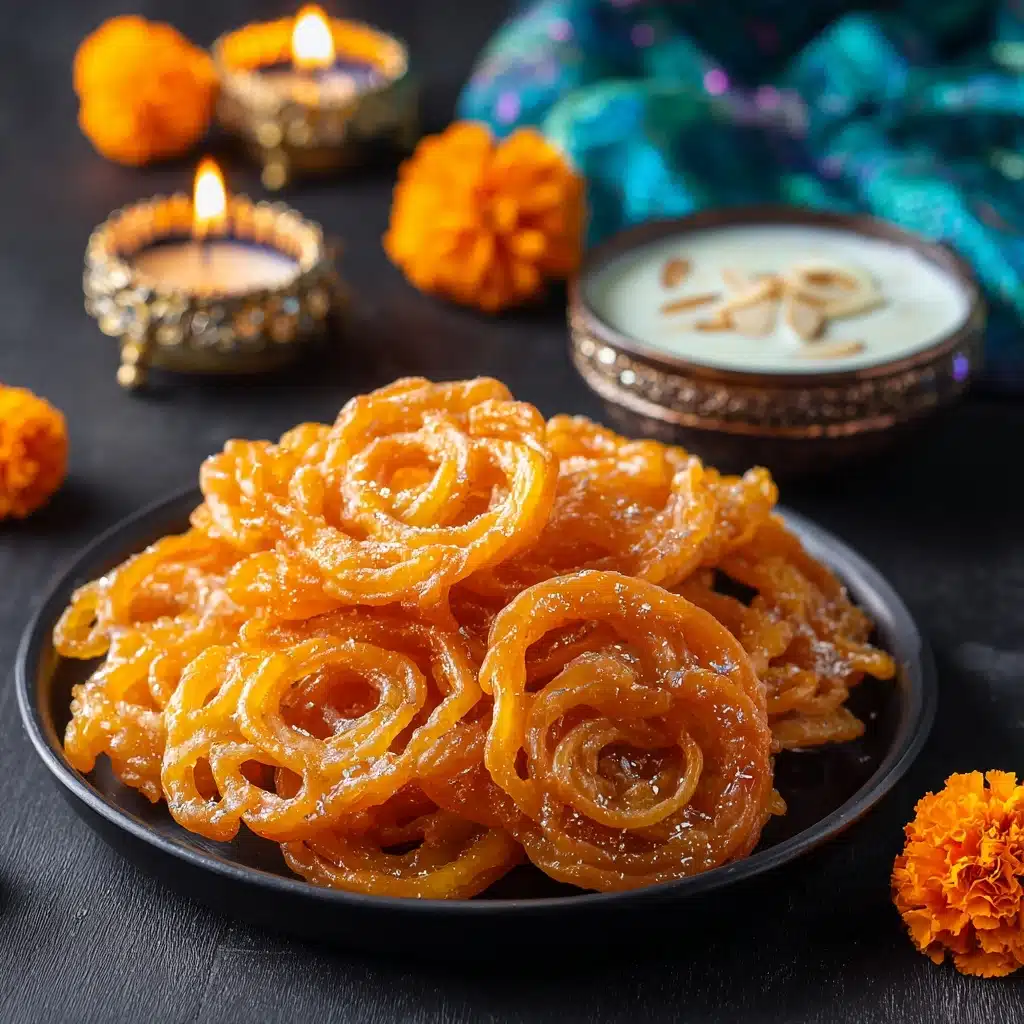
Garnishes
For a show-stopping presentation, sprinkle freshly chopped pistachios or crushed almonds over the jalebis just before serving. You can also add a few more saffron strands for that luxurious pop of color and subtle fragrance—these little touches really elevate the experience.
Side Dishes
Jalebis are traditionally enjoyed on their own, but pairing them with warm rabri or lightly sweetened condensed milk creates an indulgent contrast of textures and flavors that is heavenly. Serving alongside cool buttermilk can also provide a refreshing balance to the sweetness.
Creative Ways to Present
Try layering jalebis in a clear glass bowl with layers of rabri and nuts to create a visually stunning dessert parfait. You can also skewer small jalebis on bamboo sticks for festive gatherings, making them easy for guests to grab while adding a fun twist to the presentation.
Make Ahead and Storage
Storing Leftovers
If you have any leftover jalebis, store them in an airtight container at room temperature for up to a day. Keep them away from moisture to maintain their crispiness. Unfortunately, jalebis are best enjoyed fresh for optimal taste and texture.
Freezing
Freezing jalebis isn’t generally recommended as it affects their texture adversely. The crispness won’t survive thawing, and the syrup may separate. If you must freeze, do so without soaking in syrup and only for a very short duration.
Reheating
To revive the crispness of leftover jalebis without syrup, reheat them in a low oven (around 300°F/150°C) for 5-7 minutes. Avoid microwaving as it makes them soggy. Once warm and crispy, they can be dipped back briefly into warm syrup before serving, but be gentle to prevent breakage.
FAQs
Why use yeast in this Jalebi Recipe?
Yeast helps ferment the batter, creating tiny air bubbles that make jalebis lighter and crispier on the outside while tender inside. It gives a subtle tanginess and better texture compared to non-yeast or yogurt-only batters.
Can I substitute yeast with baking powder?
Baking powder can be used but won’t produce the same fermented flavor or light texture. Yeast fermentation is integral to this particular Jalebi Recipe (With Yeast) and is worth the extra time for the authentic result.
How do I know when my oil is at the right temperature for frying?
Drop a small amount of batter into the oil—it should rise quickly without browning immediately. If the batter turns brown too fast, the oil is too hot; reduce the heat. Perfect temperature ensures crispy yet evenly cooked jalebis.
Can I make the sugar syrup ahead of time?
Yes, you can prepare the syrup ahead and keep it warm on low heat or reheat gently before frying jalebis. Just make sure the syrup is warm and fluid enough for soaking the jalebis immediately after frying.
What causes jalebis to become soggy?
Soaking jalebis too long in hot syrup or letting excess syrup sit without proper draining causes sogginess. Follow the soaking time of 20-30 seconds, and always drain before serving to keep the perfect crispy texture.
Final Thoughts
I can’t recommend this Jalebi Recipe (With Yeast) highly enough—there’s something truly special and satisfying about making these golden treats from scratch. The joy of watching your batter ferment and transform, then piping beautiful spirals that glisten in sweet syrup is a rewarding experience anyone can enjoy. Whether for a festive occasion or a cozy weekend treat, you’ll find this recipe easy, fun, and absolutely delicious. Grab your ingredients, get your oil heating, and dive into homemade jalebi bliss tonight!
PrintJalebi Recipe (With Yeast) Recipe
This Jalebi recipe uses yeast for fermentation to create beautifully crisp and fluffy Indian sweet spirals soaked in fragrant saffron-cardamom sugar syrup. The yeast-fermented batter produces light, airy jalebis with a perfect balance of crispness and sweetness, ideal for festive occasions or a delightful dessert treat.
- Prep Time: 15 minutes
- Cook Time: 30 minutes
- Total Time: 3 hours 45 minutes
- Yield: Approximately 15–20 medium-sized jalebis 1x
- Category: Dessert
- Method: Frying and soaking
- Cuisine: Indian
- Diet: Vegetarian
Ingredients
For the Jalebi Batter
- 1 teaspoon active dry yeast
- 3 tablespoon warm water
- 1 cup all purpose flour (maida)
- 1.5 tablespoon cornstarch
- 1.5 tablespoon besan (gram flour)
- 1.5 tablespoon ghee, melted
- 2 tablespoon whole plain yogurt at room temperature
- Pinch saffron strands
- 2–3 drops orange or yellow food color
- ¼ – ⅓ cup lukewarm water (or as needed to adjust batter consistency)
- Oil for frying (you can add 1-2 tablespoon ghee for aroma, or fry directly in ghee)
For the Sugar Syrup
- 1.5 cup granulated sugar
- 1 cup water
- 1 teaspoon lemon juice
- Green cardamom pods or ¼ teaspoon green cardamom powder
- 7–8 saffron strands
Instructions
- Prepare the Yeast Mixture: In a small bowl, mix a scant pinch of sugar with 2-3 tablespoons of warm (not hot) water. Sprinkle active dry yeast on top and stir slightly. Let it sit for 5-8 minutes until frothy, indicating the yeast has bloomed. If no froth forms, discard and start over.
- Mix the Batter: In a large bowl, sift together the all-purpose flour, besan, and cornstarch. Add melted ghee and yogurt to the flour mixture. Then add the bloomed yeast mixture followed by lukewarm water little by little to form a smooth, lump-free batter with the consistency of thick pancake batter. Add saffron strands and food color for vibrant hue.
- Ferment the Batter: Cover the bowl with cling film and keep it in a warm place to ferment for 2-3 hours. The batter will become light and fluffy but not necessarily double in size. Avoid disturbing the batter during fermentation.
- Prepare the Sugar Syrup: About 10 minutes before frying, combine sugar and water in a wide pot and bring to a boil. Lower the heat and add cardamom and let it simmer for 6-7 minutes until the syrup thickens slightly to a sticky, honey-like consistency. Stir in lemon juice to prevent crystallization and add saffron strands. Keep the syrup warm near the frying area.
- Check and Adjust Batter Consistency: Gently fold the aerated batter once or twice without extensive mixing. Transfer to a squeezable bottle and test the batter flow, adjusting with a splash of water if too thick or a little flour if too thin, ensuring it flows like toothpaste.
- Heat Oil for Frying: In a wide and deep skillet or wok, pour 1-2 inches of oil or ghee and heat it over medium heat. Test the temperature by dropping a tiny amount of batter; it should rise quickly without changing color, indicating correct temperature.
- Fry the Jalebis: Squeeze the batter in a circular motion in the hot oil creating 3-4 concentric circles sealing at the center. Fry 6-7 jalebis at a time. After 2-3 seconds, the jalebis will float up. Flip and cook until golden brown on both sides. Remove with slotted spoon, draining excess oil.
- Soak in Sugar Syrup: Dip the hot fried jalebis into the warm cardamom-infused syrup for 20-30 seconds. Remove carefully, letting excess syrup drain to avoid sogginess. Repeat for all jalebis.
- Serve: Serve hot for best texture and flavor enjoyment.
Notes
- Ensure the yeast mixture froths properly to guarantee good fermentation of the batter.
- Do not over-mix the fermented batter to retain its airy texture.
- Maintain oil temperature medium-hot; too hot will brown jalebis before cooking inside, too cool will make them greasy.
- Adjust the syrup thickness to sticky but not stringy consistency for proper coating.
- Soak jalebis briefly, over-soaking will make them soggy and lose crispness.
- Use ghee for frying to enrich flavor and aroma if preferred.
Nutrition
- Serving Size: 2 pieces (about 50g)
- Calories: 190 kcal
- Sugar: 15 g
- Sodium: 10 mg
- Fat: 8 g
- Saturated Fat: 3 g
- Unsaturated Fat: 4 g
- Trans Fat: 0.1 g
- Carbohydrates: 25 g
- Fiber: 1 g
- Protein: 2 g
- Cholesterol: 5 mg
Keywords: Jalebi, Indian sweets, yeast fermented jalebi, crispy jalebi, saffron cardamom syrup, traditional Indian dessert



